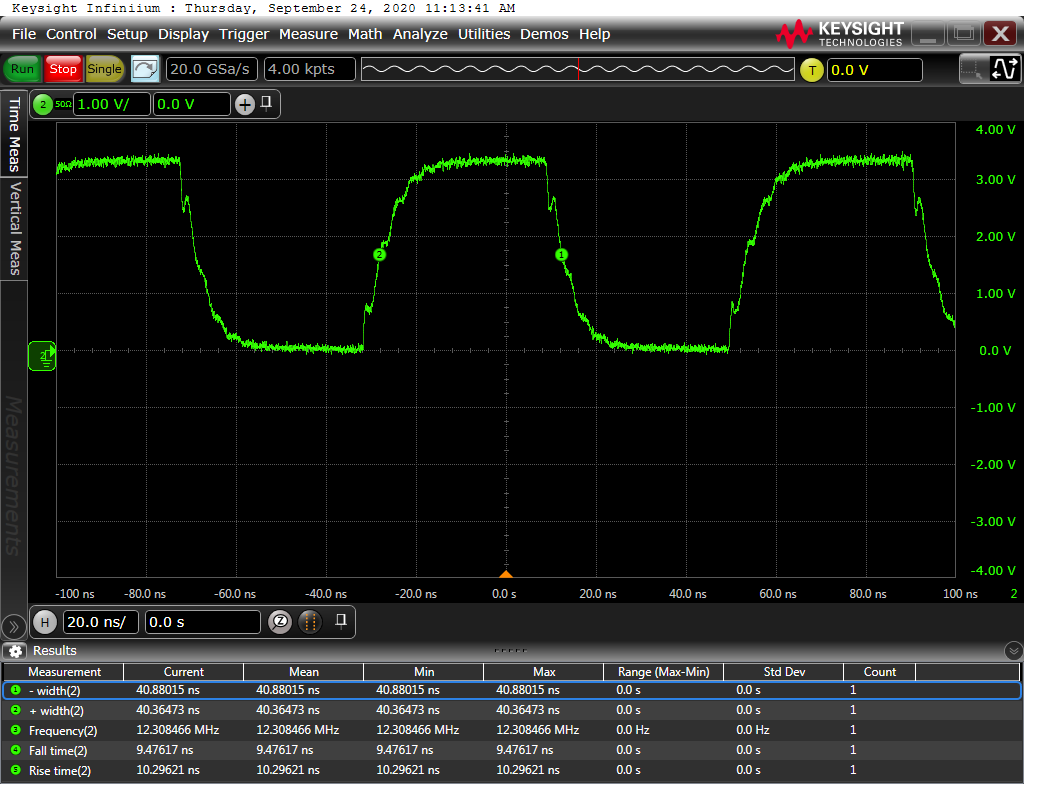In the datasheet I found BCLK time requirements in below two places.
1)What's the difference about the BCLK rise and fall time between Timing requirements(rise:10ns, fall:10ns) and Switching characteristics(rise:10ns, fall:8ns)??
2)In our application, PCM6240 is setup slave mode, and I tested waveform is about 10ns at PCM6240 BCLK pin.
Could you help to provide the TDM time sequence requirement about PCM6240 working at slave mode?
3)If BCLK rise and fall time is tested as I provide, and assuming the rise time and fall time requirement is 10ns, what problems will be happen?



